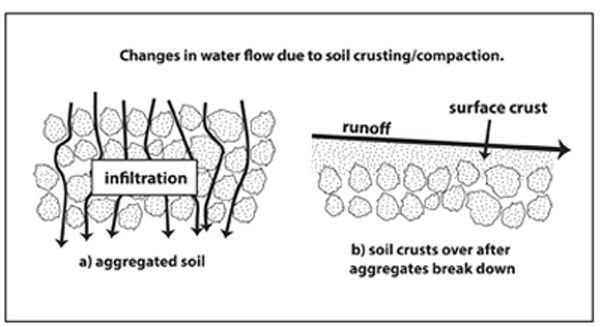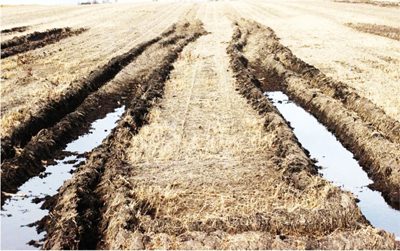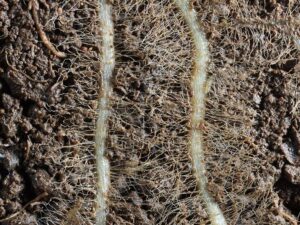Repairing compacted soil on your farm with one easy step!
MultiFIX
The Optimum Food for Microbes not only builds up healthy microbes already in your soil, it also helps them venture into new areas — like compacted soil. The microbes then get to work, releasing gases that aerate the soil, creating air pockets that allow water and roots to expand and rejuvenate compacted soils. Whether or not your soil is becoming compacted, MultiFIX can help your native microbes reach their full potential. Send us a message or give us a call, and we’ll show you to help your crops reach their full potential.
Take a look at this short (2:23) video showing MultiFIX at work fighting soil compaction. Then you’ll understand what we mean.
And if you want to see the same results on your fields, give us a call at 559.651.5050.


What causes compaction?
Simply put, compaction is caused by weight. Pressure on the soil from the weight of farm machinery squeezes the air from between the soil particles. The soil’s density increases and its pore spaces are reduced. The denser the soil becomes, the harder it is for water to infiltrate it, for organisms to dig through it, and for plant roots to penetrate it.
Often called plow pan, compacted soil is that cement-like layer on or below the surface that’s impossible to plow through. Soil compaction is considered the “costliest and most serious environmental problem” facing agriculture. It occurs when soil particles are compressed together — especially when the soil is wet — destroying soil structure, reducing porosity, and leading to a more dense soil that is hard for crop roots and water to penetrate. Compaction can reduce crop yields as much as 60%. Learning how to find and repair compacted soil is crucial to a farmer’s success.
Since water can’t get through compacted soil, it stays near the surface and creates runoff that can carry pollution, leaves standing water for mosquitoes, and increases flooding. And since roots can no longer grow down, they spread out or hardly grow at all. And without water, microorganisms and roots, crop yields drop quickly.
Biggest contributors to compaction
These three items are the biggest contributors to soil compaction. Controlling these factors is the best way to keep compaction from controlling your fields.
- Use of heavier machinery — unsurprisingly, heavier harvesters, tractors and trucks lead to soils being subjected to heavier loads and rapid compaction
- Frequent cultivation — this can result in the formation of plow pan, a hard or cemented layer of soil at the plow depth. Plow pan is similar to hard pan, except that while hard pan can occur naturally, plow pan is always man made.
- Tillage when the soil is wet — soil is more plastic when wet and therefore more susceptible to shearing and compression.
Compaction effects on different soils
Silt and clay soils are most susceptible to compaction, because their particles hold more water for a longer time than either sandy or loamy soils. As a result, clay soils remain in a plastic state, sometimes for the whole year, which means they will compress and shear when a load is applied to them.
Soil compaction can lead to:
- Decreased infiltration
- Less water storage
- Decreased root growth
- Restriction of gas exchange
- REDUCED YIELD — Compaction can reduce yields of some crops by as much as 60%
Preventing compaction
Soil compaction reduces pore space, restricting water infiltration, root penetration, and gas exchange—all critical for healthy crop growth. Beneficial soil microorganisms, such as bacteria, fungi, and actinomycetes, play a vital role in preventing compaction by building and stabilizing soil aggregates. Fungi, in particular, form hyphal networks that bind soil particles together, creating a more porous structure that resists compaction. Actinomycetes, a group of filamentous bacteria, further enhance this process by producing compounds like geosmin and polysaccharides, which aid in aggregate formation and soil stability.
MultiFIX is uniquely formulated to stimulate and sustain populations of these key microbes, including beneficial fungi and actinomycetes. By feeding native microbial communities with an optimized nutrient blend, MultiFIX promotes the biological activity needed to improve soil structure. This enhanced microbial activity increases soil aggregation, aeration, and resilience, reducing the risks associated with compaction. Farmers using MultiFIX have observed soils that are easier to work and more supportive of robust root systems, resulting in healthier crops and higher productivity.















